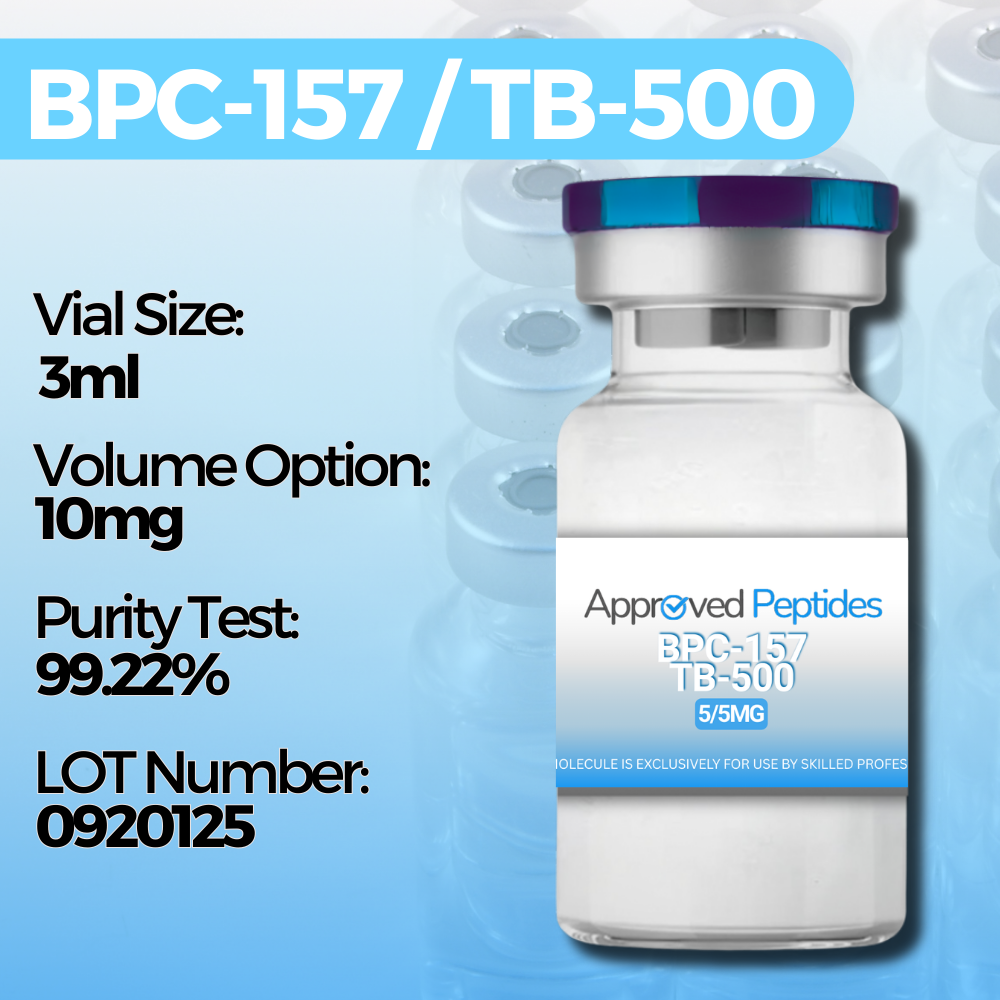Approved Peptides are intended for licensed medical professionals and experienced researchers. Reconstitution required. Dosing and use instructions are not provided.
BPC/TB 10
BPC/TB 10
Couldn't load pickup availability
Two of the most extensively studied peptides in tissue repair and regenerative medicine are BPC-157 (Body Protection Compound-157) and TB-500 (Thymosin Beta-4 fragment). Individually, they have demonstrated powerful effects on healing, angiogenesis, and recovery in preclinical studies.
- BPC-157, a synthetic fragment of a gastric protein, is recognized for its ability to accelerate soft tissue repair, protect the gastrointestinal lining, and modulate inflammation.
- TB-500, a synthetic fragment of Thymosin Beta-4, is known for promoting cell migration, angiogenesis, and tissue remodeling by mobilizing actin, a critical protein in cell structure and repair.
When studied together, BPC-157 and TB-500 appear to form a complementary pairing, offering broad investigational potential in wound healing, musculoskeletal recovery, and vascular support.
Research Applications and Benefits
The BPC-157 + TB-500 blend is often explored in research related to:
Accelerated Soft Tissue Healing
Both peptides support repair of muscle, tendon, and ligament injuries, making their combination a focus in orthopedic and sports recovery models.
Angiogenesis and Blood Flow
TB-500 stimulates new blood vessel formation, while BPC-157 protects endothelial function. Together, they create a strong model for studying vascular regeneration.
Anti-Inflammatory Effects
BPC-157 modulates inflammatory cascades, while TB-500 reduces tissue irritation, providing a dual anti-inflammatory profile without impairing healing.
Neuroprotection and Nerve Recovery
Early studies suggest that both compounds may contribute to nerve regeneration and functional recovery following injury.
Systemic vs. Local Repair
BPC-157 demonstrates systemic protective effects in the GI tract and vascular system, while TB-500 enhances cellular migration and repair at injury sites — offering complementary mechanisms.
As with all peptides sold for research purposes only, BPC-157 and TB-500 (individually or in combination) are not approved for human consumption or therapeutic use.
- Stability – Supplied in lyophilized form, requiring storage in a cool, dry environment until reconstitution.
- Regulatory Status – Neither BPC-157 nor TB-500 is FDA-approved. They remain investigational compounds studied only in preclinical and laboratory settings.
- Ethical Research Use – This blend should only be studied in controlled laboratory environments under proper regulatory compliance.
The BPC-157 + TB-500 blend brings together two of the most respected peptides in regenerative research, offering broad investigational potential in wound healing, angiogenesis, inflammation control, and systemic repair.
By uniting the cytoprotective, anti-inflammatory activity of BPC-157 with the angiogenic, actin-mobilizing power of TB-500, this combination serves as a powerful research tool for exploring the boundaries of healing and regenerative biology.
Share


